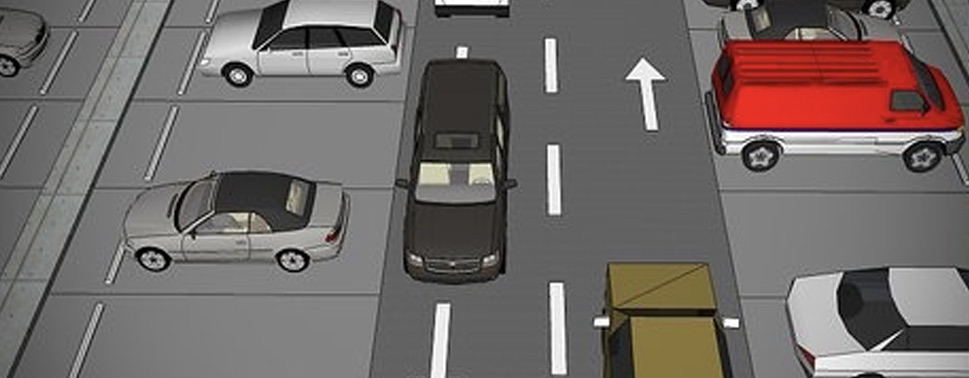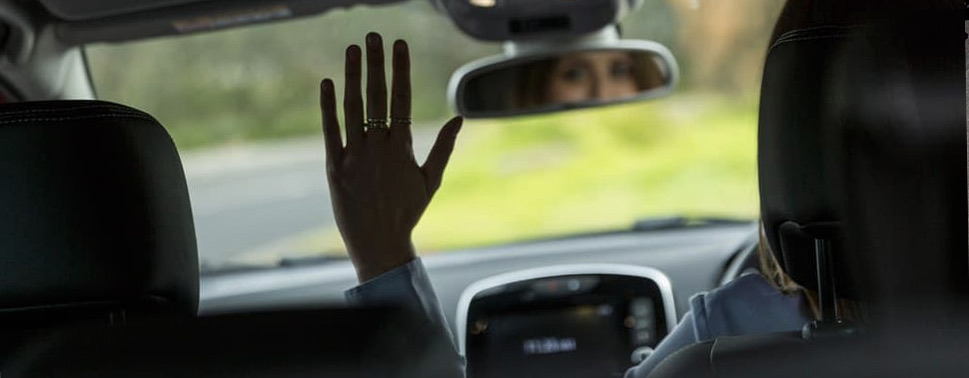






Search and compare prices at thousands of parking locations.

Select a car space, edit your booking time and pay securely.

Follow the easy directions and access instructions.
Good manners matter—here’s the essential car parking etiquette every driver should know.
In our busy lives filled with errands, meetings, and the rush to get from point A to point B, we sometimes forget to consider other drivers and vehicles when parking. If you can get a dollar every time someone parked across two parking spaces, ignored disabled spots, blocked driveways, parked outside the lines, or left shopping carts haphazardly—you’d probably be a few bucks richer.
While most of us are familiar with the concept of road rage, it’s often overlooked how aggressive behaviour is also observed in car parks. A study by Monash University’s Accident Research Centre found several reasons for Aussies getting combative when parking their cars. These reasons include feeling rushed for time, wanting to “claim” a parking bay, having a general tendency towards aggression, and getting annoyed by other drivers’ actions.
Weekends and festive seasons also seem to bring out the worst in drivers. Studies have shown aggressive driving in car parks reach peak levels during these times, with insurance data revealing car park accidents jump by around 50% over Christmas and the holiday season.
In our busy lives filled with errands, meetings, and the desire to get home quickly, we sometimes forget to consider other drivers and vehicles when parking.
Here are a few car park etiquette rules we think every driver should know and follow:
Let’s start with an unspoken golden rule of parking: You can’t park in a disabled parking space without a permit. These spaces are generally clearly marked with parking signs and special striping and are wider than regular spaces to accommodate wheelchairs. Typically, these are located near disabled ramps, usually very close to the entrance of a building.
In Australia, drivers or passengers who hold a disability parking permit are the only ones who can use accessible parking bays. This means you can park in these designated areas if you’re driving with a permit holder. However, you can’t use a disabled parking space without them in the vehicle. Leaving handicap spots for disabled people sounds like common sense, but many drivers still choose to do it.
And unfortunately, they find out inconsiderate parking has its just deserts. In NSW, for example, the penalty for this illegal parking violation can be steep, with on-the-spot fines or penalty notices amounting to $581 and one demerit point. Another unspoken rule is to not question someone’s disabled status. Remember, a person’s disability may not be visibly obvious (spine damage, bad heart, etc.) so you won’t know at first glance. If they have a disabled parking permit, they’ve mostly gone through checks to prove their disability.
Don’t be that driver who blocks other cars while you wait for a space to open up near the entrance or your perfect parking spot. Remember, it’s not just you trying to get on with your day. Other people are trying to get out of the car park or parking lot to head home or just get out, or some people are already eyeing a parking space that’s a bit further away but can’t get to it because you’re in the way.
Of course, if the driver in the space you’re waiting for is already pulling out, that’s another story. You can wait for them to get out so you can park. But if you’re sitting there in the middle of the aisle, waiting for someone to walk to their car, put their groceries or bags in the car, etc., you will be testing the patience of every other car behind you, especially if they can’t go past you. In smaller car parks, you may even bring the entire parking area to a standstill.

You don’t want to get internet famous as the drongo that took up two parking spaces. Make sure your car is centred within the lines of the space. Taking up more space than you need is not only rude, but it can result in someone else having to park further away just because of your inconvenient parking job. Not to mention that if you choose to park outside your designated space’s limits, it will be difficult for those who are parked in adjacent spaces to get in and out of their vehicles. Don’t be surprised if you come back and see a dented panel or a scratch on your vehicle if you don’t park correctly.
We know Aussies love big cars. So, if you have a larger vehicle like a truck or SUV, consider parking further away from the entrance where there may be room for your vehicle.
Experienced drivers have seen these specimens in the wild – people who park at the end of aisles or in places that are not assigned as parking spaces. Not only does this create a potential impediment to passing traffic, but it also leaves your vehicle vulnerable to collisions and scratches. Even if it looks like there’s enough space to park your car without blocking traffic, designated spaces are there for a reason. These spaces are specifically designed to prevent vehicles from obstructing driveways or getting in the way of other motorists and pedestrians. With that said, only park in designated spots in which you and your vehicle are eligible.
There’s been plenty of debate on this, but the consensus is that calling dibs on space by having your passenger standing on it is rude. This is considered to be a highly passive-aggressive and antisocial parking practice and is sure to make things heated – leading to a confrontation. Not to mention, your passenger or friend might face real danger if an aggressive driver determines a human “reserved” sign doesn’t count! When it’s difficult to find a space, be patient. Wait for one to become available, or consider finding parking in another nearby parking area.
Parking Etiquette 101 – Nobody likes a lurker. If you see someone trying to reverse out of a parking space, be patient, and don’t be a rubbernecker. Even if a driver has already climbed back into their car, do not idle in the aisle, waiting for them to go. Chances are, they’ll take their time to get their A/C and music running, send a text, or set their GPS before even turning the engine on. And if you’re dealing with a passive-aggressive driver, they’ll probably just stay longer to spite you. So unless you see backing lights, do not block the aisle waiting for them.
Car park accidents happen more often than you think, with the highest number of shopping centre car park collisions occurring during the holiday season. According to data from AAMI (Australian Associated Motor Insurers), December 2023 saw 2,423 car park incidents and January 2024 followed by 2,053 — coinciding with Christmas, Boxing Day, and New Year sales. The usual suspects for these crashes vary, but speeding is a notable one. Speeding in a busy car park can be dangerous, as accidents can be caused by both fixed and moving obstructions.
Follow the posted speed limits and drive slowly. It’s also good parking etiquette to practise defensive driving by anticipating other people’s and pedestrians’ actions. And of course, don’t text and drive – being distracted for even a split second can lead to tragedy.

When a parking space opens up, it’s common courtesy (and parking etiquette) to put your indicator on to signal your next move to other drivers. If another vehicle is near the same space and has already turned its turn signals on before you, it usually means the spot is already taken. Move on and wait for another one to open up. But what if two drivers claim the same space at the same time? Logically, the one who was furthest from the spot should give way. Also, if you’ve already driven past a spot that becomes available, it’s safer to continue driving rather than trying to claim it from another driver behind you.
The “shopping cart theory” says that returning a trolley shows your moral character. While there’s much debate on whether it’s a true measure of how “good” of a person you are, putting your trolley back is a small act of kindness that helps keep car parks safe for everyone. Leaving your trolley unmanned obstructs pedestrians and drivers alike. This can cause delays and in the worst cases, an accident. Untethered trolleys can also roll, so if you don’t fancy the idea of someone’s stray trolley damaging your car, don’t do the same to someone else. Do the right thing and put your shopping trolley back in the bay.
While you’re technically off-road in car parks, remember that basic road rules still apply in these spaces. Follow the directional arrows, look out for entry and exit signs, and watch out for pedestrians crossing. It’s also important to remember that you can still be fined and get demerit points for speeding in a car park, so always stick to the rules!
Source:
AAMI, Budget Direct, RACQ, and Monash University Accident Research Centre
With these simple car parking etiquette rules in mind, we can all make car parks and parking lots safer and more courteous places for everyone.
Happy Parking!